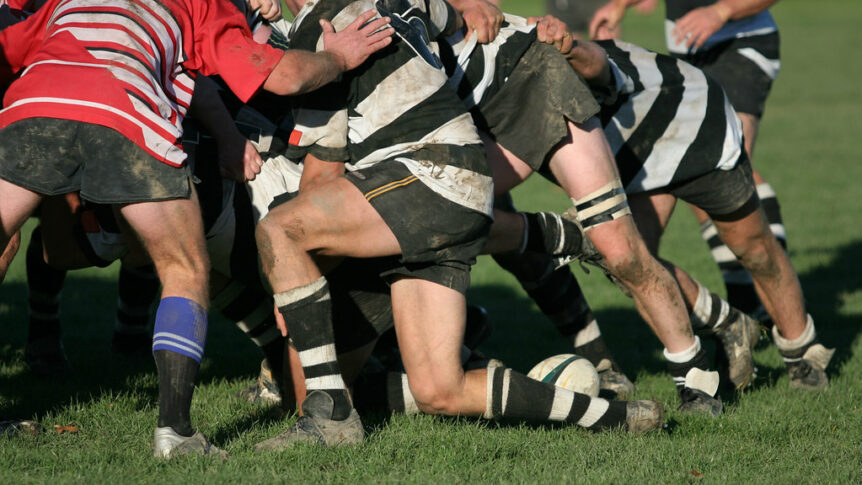Roux, J. L., Rensburg, D. C. J. van, Kemp, S., Lambert, M., Readhead, C., Stokes, K., Viljoen, W., Kerkhoffs, G. & Gouttebarge, V.
J. Sci. Med. Sport (2025). doi:10.1016/j.jsams.2025.03.015
Objectives
This study i) described the prevalence of clinically diagnosed shoulder and knee OA among retired male professional rugby players, ii) determined the association of severe injury and related surgery with shoulder and knee OA, and iii) described players’ level of shoulder and knee function and compared it to matched controls. Design Observational study with a cross-sectional design using questionnaires.
Methods
Retired professional rugby players and matched controls from a non-elite sporting background were recruited. Single questions and validated questionnaires determined clinical shoulder and knee OA as well as shoulder and knee function. Logistic regression analysis was conducted to examine potential associations, while comparisons with matched controls for shoulder and knee function were explored using the Mann–Whitney test for independent samples.
Results
Fourteen percent of the retired male professional rugby players (n = 146; mean age = 39.6 years) had clinical shoulder OA and 23 % had clinical knee OA. Every shoulder surgery doubled retired rugby players’ odds of having clinical shoulder OA (OR = 2.1; 95 % CI = 1.1–3.9) and every knee surgery doubled retired rugby players’ odds of having clinical knee OA (OR = 2.0; 95 % CI = 1.2–3.3). There was no statistically significant difference in the shoulder functioning (p = 0.660) and knee functioning (p = 0.371) of retired rugby players compared to the matched controls (n = 52; mean age = 39.2 years).
Conclusions
Clinical shoulder and knee OA is a common medical condition among retired professional rugby players. Long-term consequences should be considered when managing shoulder and knee injuries during professional rugby players’ careers.

